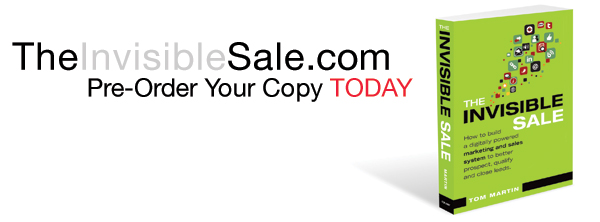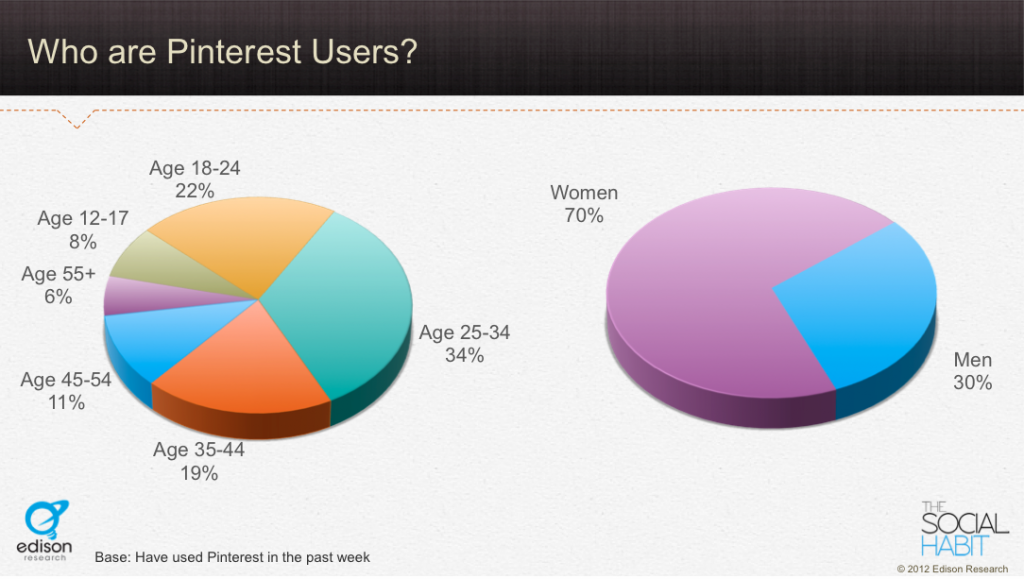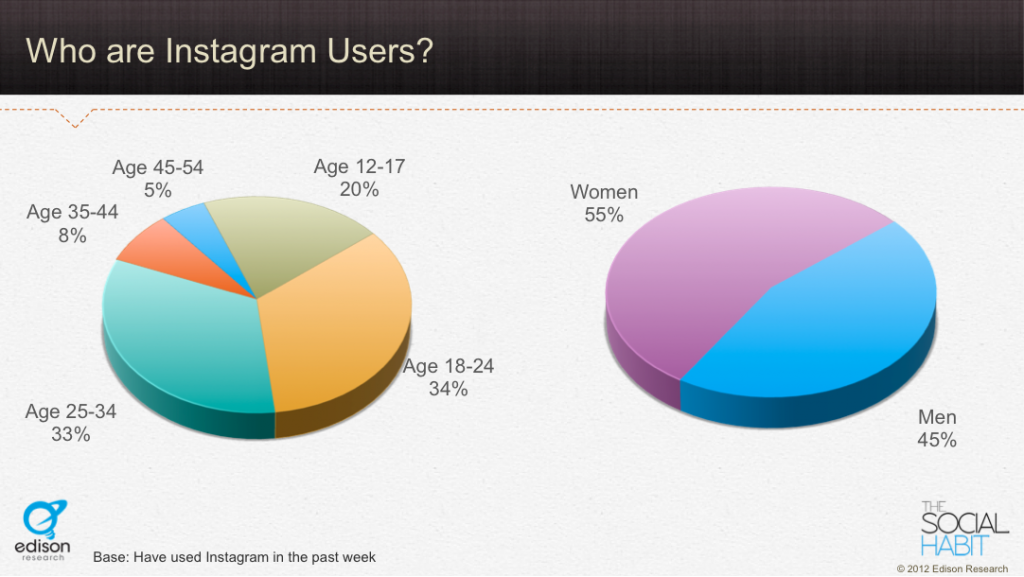Should we be on [insert name of new or hot social network here]?
This is easily the most common question our digital strategy clients pose to us. Unfortunately, the answer is always the same — it depends.
In the case of popular photo sites Instagram versus Pinterest, the data is pretty clear around which social network is right for certain brands based on the brands’ target audience.
How Do You Know If You Need To Be On a New Social Network?
That’s a great question. But before we walk through a quick data analysis comparing Instagram and Pinterest user bases, let’s first look at three reasons you definitely should NOT use as a basis for entering a social network:
- Everyone else is doing it.
- I’m seeing it all over the news, in magazines, and online – everyone is talking about how New Social Network is going to be the next Facebook.
and my personal favorite …..
- Our competitors are on it.
Let’s take the last one first. Unless your competitor has shown a long history of ALWAYS being right about new technology, consumer adoption of that technology and has lots of case studies showing how they turned early mover advantage into sales, revenue and market share advantage, then it’s safe to say following the herd ISN’T a valid reason to enter any social network.
Remember, these networks are free to use (well technically Facebook still falls into that category…. for now) but they do take an enormous amount of time to do well and see results. This is especially true of Instagram and Pinterest which require the capture or curation of lots of photographic content.
The quickest way to lose credibility and possibly employment is to make key marketing decisions because others are doing it. And frankly, it should be grounds for immediate termination because it’s just plain lazy and there is no room for lazy marketing in today’s fast-paced, digitally centric world.
Follow The Marketing Data
So if we’re not going to do it because others are doing it, how then should we make the decision whether or not to invest resources in a new social network?
To quote my friend Tom Webster,
Do the Work.
I’m not suggesting that you need to have an advanced degree in statistics or spend countless hours building Excel Spreadsheets from hell. Just spend a few minutes looking at readily available data or maybe even invest in purchasing a bit of reasonably priced data. For instance, you may want to investigate and purchase a copy of The Social Habit, which is where I found the following two slides comparing Instagram users with Pinterest users. (disclosure: Tom was nice enough to send me these slides gratis.)
Let’s start with Pinterest Demographics. From the slide below, we can quickly find three key pieces of audience data about Pinterest Users.
- Pinterest is clearly a female dominated platform (in the USA) with 70% of Pinterest users reported as female
- Pinterst’s core age demographic is 18-34 (56% of users) which mirrors Instagram’s though slightly smaller
- Pinterest tilts older with 30% of Pinterest Users falling into the 35-54 demographic and 6% of Pinterest users are 55+ vs only 8% of Pinterest Users falling into the 12-17% age demographic
Now let’s look at Instagram Demographics. From the slide below, we can quickly compare the same three key pieces of audience data about Instagram Users.
- Instagram is far more balanced with males representing 45% of Instagram users
- Instagram’s core age demographic is 18-34 (67% of users) which mirrors Pinterest’s though slightly larger in size
- Instagram’s audience tilts younger with 20% of Instagram Users falling into the 12-17 demographic and 0% of users falling in the 55+ category
- Instagram also shows a significantly smaller audience in the 35-54 demographic, with only 13% of its audience falling into that demographic
Should My Company Be on Instagram or Pinterest?
As I noted above, the answer to that question is up to you and your audience demographics. For discussion purposes though, let’s assume you work for a CVB or a DMO (Convention & Visitors Bureau/Destination Marketing Organization) as my firm does a good bit of work in the destination marketing space, I feel comfortable breaking this down from that angle.
Travel research for years has shown that females (at least in couple or family travel) tend to be the planners. The males are usually the economic buyer, that’s fancy sales talk for “the person who gives the final yes to spend the money.”
Further, according to data from The U.S. Travel Association, demographically travel breaks down like this:
| Demo | % Leisure Travel | % Biz Travel |
| Gen Y | 12% | 13% |
| Gen X | 31% | 36% |
| Baby Boomers | 36% | 38% |
Based on this data, wouldn’t it seem that the GenX and Baby Boomer market represent a much better travel target audience?
So then, if you were a CVB or DMO Marketing Director, and you had the Instagram and Pinterest Audience Demographic Data above, which platform would you recommend if you had to pick just one platform?
The data suggests that Pinterest users are more likely to be females between the ages of 35-54 (GenX and Late Boomers). Further, the data suggests that the Older Boomer (55+) crowd isn’t on Instagram at all. Given the propensity for travel within this GenX and Boomer Target Audience, one could clearly make an argument for an ongoing CVB Pinterest effort.
In fact, according to data compiled by my pal Anne Hornyak, a whopping 254 USA CVBs (as of June 2012) are actively using Pinterest. That’s a pretty good indication that the vast majority of CVB Marketing Directors would agree with your recommendation.
Another argument in favor of Pinterest is that Pinterest’s private boards can be used to create an incredibly insightful and inexpensive consumer research process.
But What About Instagram?
A quick Google Search of CVB’s on Instagram quickly reveals that a ton of CVB’s are investing, some of them quite extensively, in the Instagram platform. They’re not just taking and uploading their own pictures, they’re investing in Instagram Contests and giving away real prizes, spending significant amounts of time, and in general, making a pretty serious investment in a platform that skews GenY and is heavily populated by non-traveling teens and tweens.
As noted above, the data seems to suggest Instagram isn’t the best use of a CVB’s Marketing efforts and time. So then why are so many CVBs and DMOs making these significant investments in Instagram Marketing?
Care to toss in your two cents? How would the analysis turn out if you did it for your company?
photo credit: Jason A. Howie





Hey Tom,
Solid post sir, really appreciate the depth on the the metrics and demographics behind these social networks.
In addition to the ‘audience’ portion of the question, I would balance that against organizational goals. Those are the two key questions one needs to answer prior to jumping head-first into a new social site.
Tom got you halfway kids…damn generous of him…now figure out if your engagement on these sites will result in your desired goals.
Good stuff.
– Troy
Hey Troy,
Thanks… that’s high praise given the source! Agree with you on the organizational goals and raise you one “specific micro-campaign or target” goals. For instance, while overall, I’d say Pinterest is probably the better platform for tourism marketing, I wouldn’t be so quick to recommend it if the audience was young, mobile happy millennials… say for a bridesmaid’s getaway or bachelor party oriented promotion. Then maybe you could make a stronger argument for one over the other? What say you sir?
Hey Tom,
My pleasure. I can go with micro-campaign goals…again, those should correspond with overall goals, but yeah, that works.
And yes, in that case, I think one could make the argument for specific network over another.
I would caution against creating goals just for the sake of using a social network. If the social network is a good fit, then by all means use it…but if you find yourself adjusting or creating goals just so you can use Instagram, I would think twice.
Good stuff.
– Troy
Tom,
Thank you for the well-researched and timely article. I don’t often comment, but I do always read the content you provide. I found “The Social Habit” information on typical user ages very helpful in making my decision to put Contract Furniture Company on Instagram (turns out, we likely don’t need it). We are on Pinterest, and have had some social engagement with clients there; this makes sense due to what we sell (commercial furniture) and the average age and gender of the majority of our clientele. Keep the articles coming … they are appreciated!
~Autumn
Thanks Autumn… that’s REALLY good to know…. sometimes as a writer it can get awfully hard to work up a good post if you think no one is reading 😉 but do please change that lurking policy of yours! I find we all learn a lot more when folks bring their individual POV and lens to the party.
For instance, I’m actually a bit surprised that a commercial furniture company does well on Pinterest. In fact, I’ve seen a number of folks on LinkedIn asking if anyone has successful B2B uses of Pinterest. Might you be willing to elaborate a bit more?
Hi Tom,
I’d be happy to elaborate on our use of Pinterest. It’s a great site for us to post installation pics from clients – not only do they enjoy the free publicity, others in the hospitality industry can look at the photos for (P)inspiration. Additionally, I have added a “Pin It” code to each page of our website so that designers and clients can create Pinterest boards with our products for planning purposes. We’ve had some good feedback on this element. What’s terrific about Pinterest is that each posted photo can be linked with a URL, meaning that the photos can be followed back to the source; I do this for every customer installation photo I post, as well as describe the items that are being shown. This generates traffic to our website. Lastly, as I troll the internet looking for relevant content I can easily pin infographics, thumbnails from articles, recipes (we work with the foodservice industry, after all), and other things that we and others might like, which is all attributed to Contract Furniture Company and gets our name out there, as well as lets people get to know the personality behind the company.
As for my tendency to lurk, I’ll try to come out of my shell a bit in future 😉
Good stuff Autumn. Checked out your boards…. you may want to think about your Pinterest Board Naming Strategy — probably some room for improvement there, which may help your pins/boards to appear higher in Pinterest search and thus get more eyeballs and repins on those boards. Don’t be a stranger!
Tom –
Great post. There’s always long-going debates about one Social Media platform vs. another. Back in the day, it was Facebook vs. Twitter – which is more important and which should you do. My answer is easy – I think there’s an opportunity for both Pinterest and Instagram for tourism marketing. The two provide a different audience and a different type of user.
For Visit Savannah, both are important elements to our social media. Pinterest is strong for someone’s dreams – where do you want to go and what do you want to see. It’s also great for promoting authentic destination-branded gifts, recipes, beauty, products, events etc. Instagram is strong for real-life pictures – people sharing authentic and unique experiences in your destination. Plus, both reach a different age group and touches on a different experience.
So my answer, there’s room for both, but I caution against people using the two platforms the same – they are completely different and should be treated differently.
Good or not – this is my answer, hope you agree.
Cheers,
Melissa
Melissa,
Thanks for taking the time to pop over here to include that thought. You’ve nailed it IMO… the key to any platform decision is to see IF it has a role in your marketing and then DEFINE that role. As you note, planning vs doing or others might say younger vs older audience, etc. They key is to realize that each platform is different and you can’t just “spray and pray” if you hope for real results.
Don’t be a stranger.
Good stuff as usual Tom, and completely agree that Melissa nailed it.
Our CVB client is using Pinterest as both you and Melissa describe and planning to use curate/integrate Instagram content from the younger crowd to show off different facets of the city. Different goals, different audiences, social with a purpose. BAM.
As a side note, I’d speculate that, over time, given the stats on the number of women who are the primary breadwinners in their household now, that the data on men-as-economic-buyer is going to start changing, too.
Love your new site BTW. Spaight
Thanks for dropping in Sue and for the kind words on the new site design. We’re loving it!
Social with Purpose — love that… so many just don’t or maybe can’t apply the rigor to let the data guide them… even just last night I had someone tell me “they prefer Instagram” — and I just had to plant my hand on my forehead. It can’t be about what we prefer, it has to be about what the consumer prefers, no?
Thanks for the data and of course, speaking the truth. Every company and brand is different, so they have to figure out where their audience is and be social in that space.
I recall participating in an instagram contest, promoted by the San Francisco CVB. They used the city’s hashtag #SF, along with their own one for the contest. I thought it was a good way to explore the city via images and decide where the hot spots to visit were. I was even inspired to write a blog article about how I traveled the social media savvy way!
Interesting Georgia,
I think your comment ties into Melissa’s re: different platforms for different goals. She too noted that Instagram is likely better for driving in-market engagement (like SF did).
Thanks for dropping in and pushing the convo along… don’t be a stranger.
Pinterest and Instagram were definitely the winners of 2012 on social media.